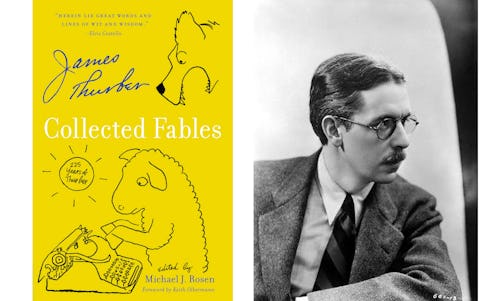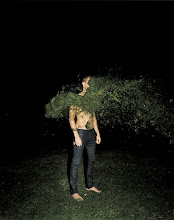


Philadelphia Murals
*Note: This is a story that has run in Charit'ee Magazine and this is the unedited version. The published version is not cut and pasteable. I'm throwing up a picture of my choosing, as well. The published version is beautifully accompanied by all kinds of art.
When I moved to South Philadelphia from Brooklyn last November, I started riding my bike to work in Center City almost everyday through the Italian Market along South 9th Street. Just before you hit Christian Street, sliding between cars and vendors selling fresh produce, you can't help but notice a massive mural of Frank Rizzo on the western side of the street. It's mostly just his face; a face that for many Philadelphians is unforgettable. He rose through the ranks of the Philadelphia Police Department starting in the 1940s to Police Commissioner in 1967-'71. On August 31, 1970, Rizzo's police officers raided the Black Panther Party's headquarters, days after the Panthers declared a war on Police Officers, and stripped members publicly in front of cameras. He also promoted and protected a lot of African American officers, 20% of his force in 1968, when race riots ripped apart L.A. and Detroit, but not Philly. Rizzo means a lot of things to a lot of Philly lifers, good and bad - he was just a big white face on the side of a wall to me until I started looking at the work of the Mural Arts Project (MAP). MAP is the driving force behind over 2,000 murals that cover buildings, roofs, houses and parking lots across the City of Brotherly Love.
The Rizzo memorial is mentionable because of the fact that the thousands of murals that decorate the city have a story behind them. There has been months and months of preparation, design and sometimes community-involvement, thousands of dollars, pounds of materials and hours of labor poured into every massive piece of public art. Philadelphians can even live and work in a neighborhood for months and years before they take the time to look 360 degrees around them and take in all the murals that blanket the exposed facades of buildings.
Arnetta is a legendary fixture at the front desk of Philadelphia Weekly. She's a wonderful black woman who loves her grandchildren and knows her Philly. I told her I was writing about murals and her face lit up. She has two favorites, both by Meg Saligman, "Common Threads" at Broad and Spring Garden and "The Theatre of Life" at Broad and Lombard. When I rode my bike down Spring Garden toward Broad Street I was facing the west when I saw the huge pairs of eyes that cover its main entrance and along its side. I dismounted, took some pictures and then I turned around. There it was, eight stories tall facing Broad Street from the east in front of a vacant barb-wire-topped parking lot - "Common Threads." A mix of modern imagery and antiquated, classical imagery, most everyone in some kind of pose or performance. It was one of the first murals, perhaps in part due to its size, location and level of sophistication, that turned murals into a respectful and welcome presence in Philly.
"'Common Threads' is probably our most recognizable," says Ryan Derfler, director of tours for MAP. "Jane [Golden, founder and director of MAP] likes to say that that was the one that really changed people's minds about murals." Derfler has been expanding MAP's tour programs since he took the position in October. There are the standard tours in antique trolleys with an experienced mural expert exposing riders to the history and significance of murals by neighborhood. The tours are in rotation by neighborhood: North Philly, West Philly, South Philly, and Center City. And, as Ryan explains, by touring murals you tour Philly's neighborhoods.
"In South Philly you see Frank Sinatra, Mario Lanza, Frank Rizzo," says Derfler. "You can look at the murals and see what's important to them. You go to North Philly and see Mexican nationals, the rainforest in Puerto Rico, they're really colorful. So a tour is really like getting to know each neighborhood" These murals are defined by and define neighborhoods. "You go to West Philly and you see the Will Smith mural, the Patta LaBelle mural. They were real proud of these people and they want to see them on a wall," he adds. Murals are about bringing art to the people, something muralists find particularly appealing, sometimes enough to leave the gallery completely behind.
"I enjoyed the inclusiveness of making art in a public space," says Eric Okdeh, a prominent muralist in Philadelphia and part of the winning design team behind one of MAP's big summer projects called This We Believe. "It's collaboration and community involvement and bringing art to the people." One of his biggest achievements is a mural at the site of the Elwyn Institute's Philadelphia branch on 41st and Market Streets in West Philly. Working with six different behavioral health organizations in Philly, Okdeh got nearly 200 people involved in the process: placing stained glass to form a sunflower, painting by number, and posing for photographs.
"The unfortunate part about mural-making is that you only see the mural," Okdeh adds. "You don't see the months of working with community." West Philadelphians living along the Elevated ('El') Train, the Market-Frankford line, have begun working with MAP and a former Philly resident, Steve Powers on another big project culminating this August called Love Letters. Powers was a graffiti artist at the age of 15, growing up in Philly and tagging his ESPO signature all over the city. MAP and Powers have begun speaking with residents about a project that will paint over rooftops and higher floors of buildings to create a love story between a young boy and girl riding the train. The story will unfold for train riders as they head west from 46th to 63rd Street and back east again.
Philadelphia is one-of-a-kind, being covered in murals. Jessica Kroboth, a dancer for a Philly company called Archdream for Humankind, just returned to Philly after a national tour and realized what an asset our murals are: "Chicago and L.A. had a few murals, but nothing like they are here. Philly is just unbelievable like that." With over 2,800 murals and probably closer to 3,000 by the end of the year, this MAP's 25th Anniversary, there are more murals than one resident could possibly see in a day, a month, a year. It's something that unravels for Philadelphians over time.






1 comment:
Just came across this article, and think you did a fine job with an overview. Kudos.
Post a Comment